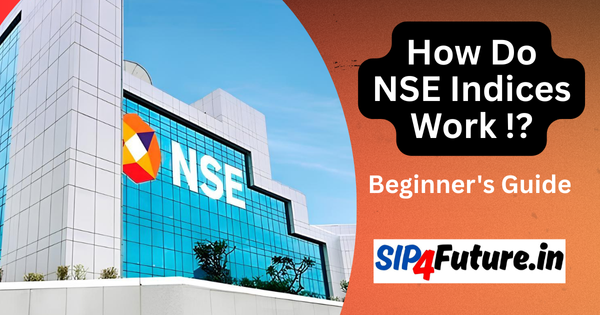Bajaj Finance Ltd., a leading non-banking financial company (NBFC) in India, is making waves in the financial markets with its upcoming board meeting scheduled for April 29, 2025. The company is set to discuss significant corporate actions, including a potential bonus share issue, a stock split, and a special dividend, alongside its March quarter results. Trading at ₹9015.50 on the National Stock Exchange (NSE) with a slight dip of 0.85% as of April 29, 2025, Bajaj Finance remains a focal point for investors. This article dives into the details of these announcements, their implications for shareholders, and the broader market dynamics influencing the stock, including sectoral impacts, government policies, and global market trends.
What Are the Key Announcements from Bajaj Finance’s Board Meeting?
Bajaj Finance’s board meeting on April 29, 2025, is poised to be a game-changer for shareholders. The agenda includes:
- Bonus Share Issue: The company is considering issuing bonus shares for the first time in nine years, since its last bonus issue in September 2016 at a 1:1 ratio. Bonus shares are additional shares given to existing shareholders at no cost, typically funded from the company’s reserves. This move could enhance liquidity and make the stock more accessible to retail investors.
- Stock Split: A potential 1:1 stock split is on the table, reducing the face value of shares from ₹2 to ₹1. A stock split increases the number of shares while reducing the share price proportionally, making the stock more affordable without altering its market capitalization.
- Special Dividend: Bajaj Finance may declare a special interim dividend for the financial year 2024-25, following its consistent dividend-paying history. The last dividend, announced on June 21, 2024, was ₹36 per share, yielding 0.39% as of April 25, 2025.
- March Quarter Results: The board will review and approve the audited financial results for the fourth quarter and the full financial year ending March 31, 2025. Analysts expect robust performance, given the company’s 26% year-on-year growth in assets under management (AUM) to ₹416,750 crore as of March 31, 2025.
These announcements have sparked optimism, with Bajaj Finance’s stock hitting a 52-week high of ₹9,660 on April 24, 2025, before settling at ₹9,015.50 on April 29.
Bonus shares are a shareholder-friendly move that can enhance the appeal of Bajaj Finance’s stock. By issuing bonus shares, the company rewards investors without requiring additional investment. For example, a 1:1 bonus issue would double the number of shares held by each investor, effectively halving the per-share price while maintaining the total value of their investment. This can:
- Increase Liquidity: More shares in circulation make the stock more tradable, attracting retail and institutional investors.
- Boost Accessibility: A lower share price post-bonus issue makes Bajaj Finance more affordable for smaller investors.
- Signal Confidence: Issuing bonus shares reflects management’s optimism about future profitability, as it utilizes accumulated reserves.
However, bonus shares do not increase the company’s overall market capitalization or the shareholder’s wealth immediately, as the stock price adjusts proportionally. For instance, if Bajaj Finance, with a market cap of ₹5,64,262.91 crore as of April 28, 2025, issues a 1:1 bonus, the share price would theoretically halve, but the investor’s total holding value remains unchanged.
What Does a Stock Split Mean for Bajaj Finance Investors?
A 1:1 stock split, reducing the face value from ₹2 to ₹1, would double the number of shares while halving the share price. For example, an investor holding 100 shares at ₹9,015.50 would hold 200 shares at approximately ₹4,507.75 post-split. Key impacts include:
- Affordability: A lower share price makes Bajaj Finance more accessible to retail investors, potentially broadening its investor base.
- Market Perception: Stock splits are often viewed positively, as they signal growth expectations and can increase trading volumes.
- No Change in Value: Like bonus shares, a stock split does not alter the company’s market cap or the investor’s total investment value.
Bajaj Finance’s last stock split occurred in 2016, and the current proposal aligns with its strategy to maintain a competitive share price amidst its robust growth trajectory.
Bajaj Finance has a strong track record of rewarding shareholders with dividends, having paid dividends 32 times since 1987. The proposed special interim dividend for FY 2024-25, to be discussed on April 29, 2025, could provide a significant payout. Based on the company’s recent dividend history:
- Last Dividend: ₹36 per share, announced on June 21, 2024, with a yield of 0.39%.
- Historical Trend: Dividends have grown steadily, from ₹10 in 2021 to ₹36 in 2024, reflecting strong profitability.
A special dividend could be higher than the regular payout, given the “special” designation, potentially boosting investor confidence. The exact amount and ex-dividend date will be confirmed post the board meeting, with the trading window closed from April 1 to May 1, 2025, for designated persons.
How Is Bajaj Finance Performing Financially?
Bajaj Finance’s financial performance underpins its ability to propose shareholder-friendly actions. Key highlights from recent data include:
| Metric | Value (as of Dec 31, 2024) | Year-on-Year Growth |
|---|---|---|
| Net Profit | ₹4,246.54 crore (Q3 FY25) | 16.7% |
| Total Income | ₹18,058.32 crore (Q3 FY25) | Not specified |
| AUM | ₹398,043 crore | 28% |
| Deposits | ₹71,400 crore | 19% |
- Profitability: The company reported a 16.7% year-on-year increase in net profit for Q3 FY25, driven by strong lending across retail, SME, and commercial segments.
- AUM Growth: Assets under management grew by 26% year-on-year to ₹416,750 crore by March 31, 2025, reflecting robust demand for consumer and housing finance.
- Deposit Growth: The deposit book expanded by 19% to ₹71,400 crore, indicating strong customer trust.
- Market Cap: At ₹5,64,262.91 crore, Bajaj Finance is among India’s top NBFCs.
The company’s diversified portfolio, spanning consumer finance, commercial lending, and SME finance, has fueled its growth. Its subsidiaries, including Bajaj Housing Finance Ltd. and Bajaj Financial Securities Ltd., further strengthen its market position.
What Sectors Are Driving Bajaj Finance’s Growth?
Bajaj Finance operates in the NBFC sector, with exposure to multiple sub-sectors:
- Consumer Finance: Includes personal loans, home loans, and durable finance, catering to urban and rural customers.
- SME Finance: Supports small and medium enterprises with tailored lending solutions.
- Commercial Lending: Offers vendor financing and loans against securities.
- Housing Finance: Through Bajaj Housing Finance, the company has seen 26% AUM growth to ₹1.15 lakh crore in Q4 FY25.
The NBFC sector benefits from India’s growing credit demand, driven by rising disposable incomes and digital adoption. However, it faces challenges like regulatory scrutiny and interest rate volatility. Bajaj Finance’s diversified portfolio mitigates risks, positioning it as a sector leader alongside peers like Mahindra & Mahindra Financial Services and Shriram Finance.
How Do Government Decisions Impact Bajaj Finance’s Stock Price?
Government policies significantly influence Bajaj Finance’s performance:
- RBI’s Risk Weight Reduction: In April 2025, the Reserve Bank of India (RBI) reduced risk weights on loans to NBFCs from 125% to 100%, effective April 1. This move is expected to enhance credit flow to the sector, lowering borrowing costs for Bajaj Finance and boosting its lending capacity.
- RBI’s Operational Concerns: In Q4 FY25, the RBI issued a letter of displeasure regarding lapses in Bajaj Finance’s co-branded credit card business, raising concerns about customer risks. While this caused temporary market pressure, the company’s strong fundamentals cushioned the impact.
- Repo Rate Expectations: Analysts anticipate a 25 bps repo rate cut by the RBI, which could reduce borrowing costs and stimulate housing and consumer finance demand, benefiting Bajaj Finance.
These policies highlight the interplay between regulatory oversight and growth opportunities in the NBFC sector. Investors can track RBI announcements on its official website for updates.
What Is the Global Market Scenario Affecting Bajaj Finance?
Global market dynamics play a crucial role in Bajaj Finance’s stock performance:
- FII Sell-Offs: Foreign institutional investors (FIIs) reduced their holdings in Bajaj Finance from 17.73% in December 2024 to 17.76% in March 2025, reflecting cautious sentiment amid global uncertainties like U.S. tariff concerns and rupee depreciation.
- Bullish Domestic Sentiment: Domestic institutional investors (DIIs) increased their stake from 15.01% to 15.05%, with mutual funds holding 9.52% as of March 31, 2025, signaling strong domestic confidence.
- Market Volatility: Indian benchmark indices Sensex and Nifty have been range-bound due to global cues and FII outflows, yet Bajaj Finance’s stock surged 30% in the last three months, outperforming the market.
The company’s resilience amid global volatility underscores its strong fundamentals. Investors can monitor market trends on the NSE website or BSE website.
How Have Bajaj Finance’s NCD Allotments and Stock Options Influenced Its Strategy?
Bajaj Finance recently allotted non-convertible debentures (NCDs) worth ₹1,276.48 crore on a private placement basis, strengthening its capital base. NCDs are debt instruments used to raise funds, offering fixed returns to investors. This move supports the company’s lending expansion while maintaining a healthy debt-to-equity ratio, though its interest coverage ratio remains low, a point of caution for analysts.
Additionally, the company granted 9.1 million stock options under its ESOP 2024 scheme, with vesting over 1-5 years. This initiative aims to retain talent and align employee interests with long-term growth, a common strategy among NBFCs.
What Are Bajaj Finance’s Historical Returns?
Bajaj Finance has delivered stellar returns, making it a favorite among long-term investors:
| Time Period | Return (%) |
|---|---|
| 1 Week | -0.55% |
| 1 Month | 0.49% |
| 3 Months | 22.50% |
| 1 Year | 28% |
| 3 Years | 27.68% |
| 5 Years | 293.85% |
- Short-Term Volatility: The stock saw a 0.55% decline in the past week, reflecting profit-taking after hitting a 52-week high.
- Long-Term Growth: A 293.85% return over five years highlights its multibagger status, driven by strong AUM growth and market leadership.
- CAGR: The compound annual growth rate (CAGR) stands at 19.82%, underscoring consistent value creation.
What Are the Future Targets for Bajaj Finance?
Analysts remain bullish on Bajaj Finance, with several research institutes providing price targets:
| Analyst | Target Price (₹) | Time Frame |
|---|---|---|
| Morgan Stanley | 10,500 | 12 months |
| CLSA | 11,000 | 12 months |
| Median (33 analysts) | 8,965.97 | 12 months |
- Optimistic Outlook: CLSA’s ₹11,000 target reflects confidence in Bajaj Finance’s growth potential, driven by lower borrowing costs and improved asset quality.
- Short-Term Targets: Experts suggest ₹9,300-₹9,500 for short-term traders, with medium-term targets at ₹9,800 within 2-4 months.
- Market Sentiment: The stock’s “Buy” rating from 23 of 31 analysts underscores its strong fundamentals.
Investors can explore detailed forecasts on platforms like Moneycontrol or CNBC TV18.
Conclusion: Why Bajaj Finance Remains a Top Pick
Bajaj Finance’s strategic moves—bonus shares, a potential stock split, and a special dividend—signal its commitment to shareholder value. With a robust financial performance, diversified portfolio, and resilience amid global and domestic challenges, the company is well-positioned for growth. Government policies like RBI’s risk weight reduction and anticipated rate cuts further bolster its outlook, while its historical returns and analyst targets make it a compelling investment. As the NBFC sector continues to thrive, Bajaj Finance stands out as a leader, ready to capitalize on India’s growing credit demand.
Disclaimer: The information provided in this article is for educational purposes only and should not be considered financial or investment advice. Investing in securities markets involves risks, and past performance is not a guarantee of future results. Readers are advised to consult certified financial advisors and review relevant documents on platforms like NSE or BSE before making investment decisions.




